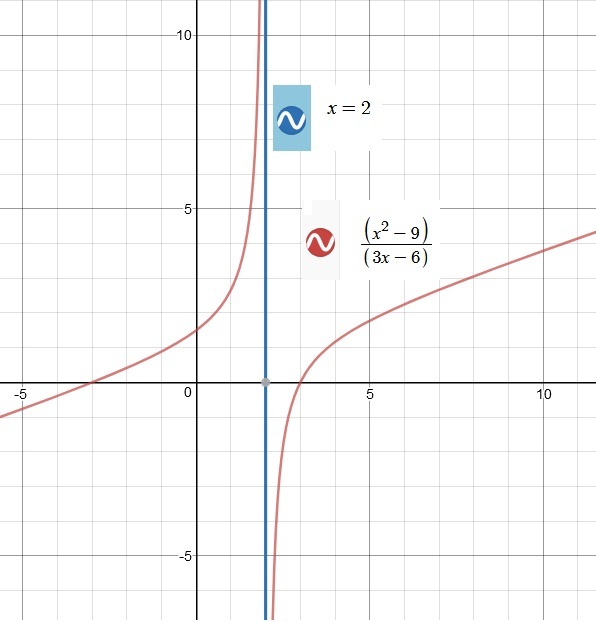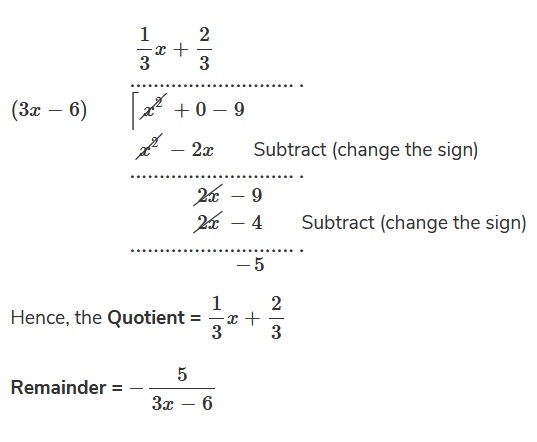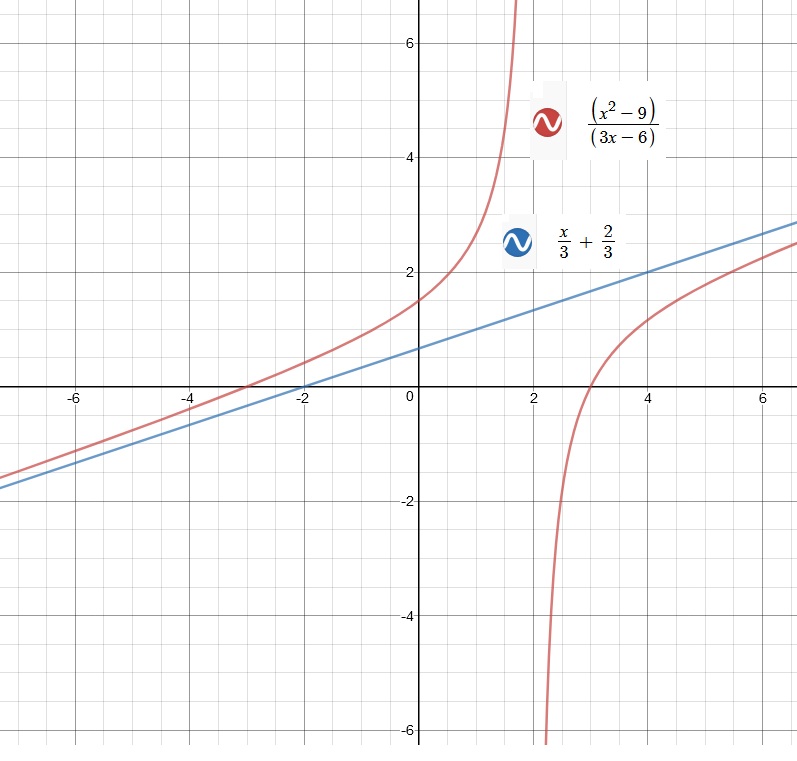How do you find vertical, horizontal and oblique asymptotes for #(x^2 - 9)/(3x-6)#?
1 Answer
Vertical Asymptote:
Horizontal Asymptote: None
Equation of the Slant/Oblique Asymptote:
Explanation:
Given:
To find the Vertical Asymptote:
a. Factor where possible
b. Cancel common factors, if any
c. Set Denominator = 0
We will start following the steps:
Consider:
We will factor where possible:
If there are any common factors in the numerator and the denominator, we can cancel them.
But, we do not have any.
Hence, we will move on.
Next, we set the denominator to zero.
Add
Hence, our Vertical Asymptote is at
Refer to the graph below:

To find the Horizontal Asymptote:
Consider:
Since the highest degree of the numerator is greater than the highest degree of the denominator,
Horizontal Asymptote DOES NOT EXIST
To find the Slant/Oblique Asymptote:
Consider:
Since, the highest degree of the numerator is one more than the highest degree of the denominator, we do have a Slant/Oblique Asymptote
We will now perform the Polynomial Long Division using

Hence, the Result of our Long Polynomial Division is
Equation of the Slant/Oblique Asymptote is
Refer to the graph below:

We have all the required results now.

